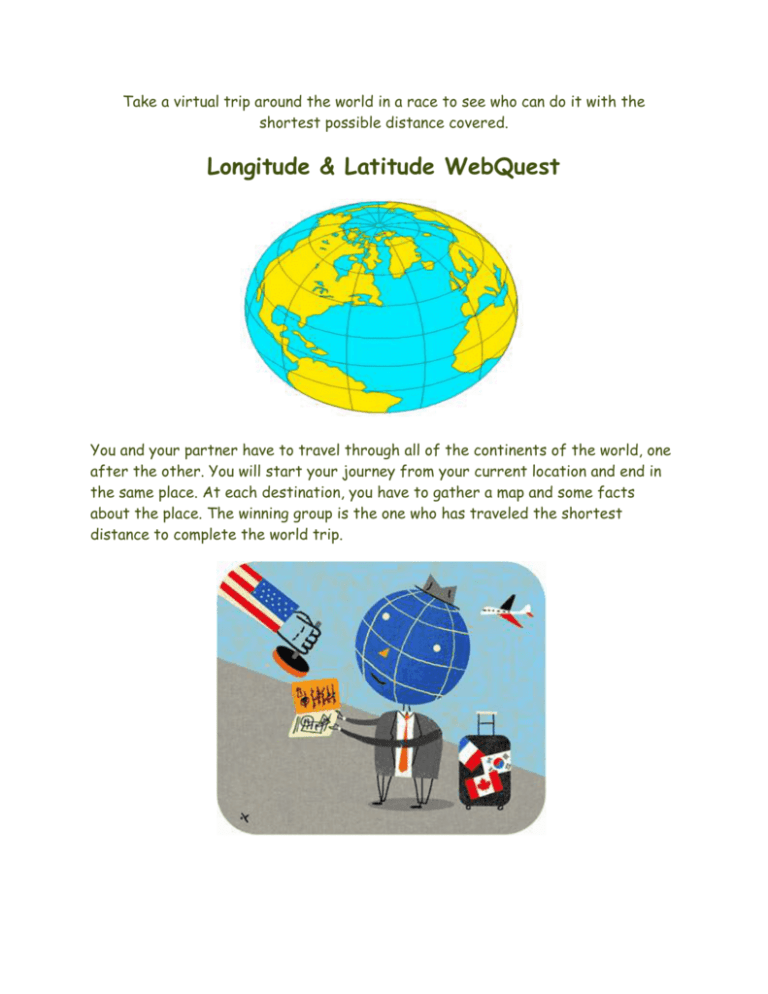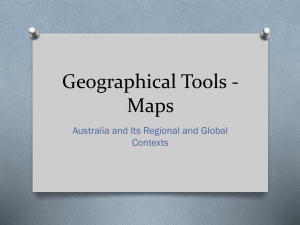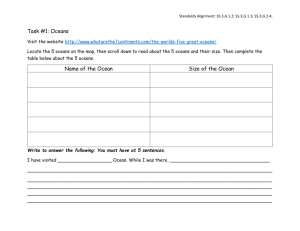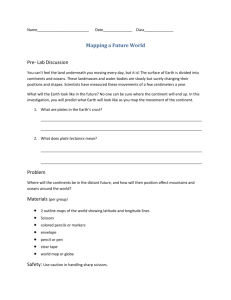Around the World race Webquest
advertisement

Take a virtual trip around the world in a race to see who can do it with the shortest possible distance covered. Longitude & Latitude WebQuest You and your partner have to travel through all of the continents of the world, one after the other. You will start your journey from your current location and end in the same place. At each destination, you have to gather a map and some facts about the place. The winning group is the one who has traveled the shortest distance to complete the world trip. Task: Here are the things you need to do: You start your virtual journey from your current location (West Milton, Ohio). Record the longitude and latitude of your starting point. You need this so that you can calculate the distance to your next "destination". There are seven continents in the world. Your "journey" will take you to every one of them (required). You can "travel" to any one location within each of the continent. You do not need to visit more than one location on the continent. That location may be a city or whatever you choose. You have your own private jet with the ability to land anywhere, so you are not dependent on airports. For each place you "visit", you merely need to record the coordinates (latitude and longitude), obtain maps and information about the place, and calculate the distance you took to travel there from your previous location. Your current location is merely your starting and ending point. You will have to choose another location in that continent to gather maps and information. The distance you travel is the direct distance between two locations. You don't have to follow roads or shipping routes or air routes in computing the distance. In calculating your total distance traveled, you must include the distance between your present location and your first destination, as well as the distance you traveled from your last destination back to your home country. At the end of your "trip", you will have to make a presentation to the class showing the details of your trip: the places you visited, the distance traveled, information about each place, maps, and why you chose that particular route. Your presentation will be done on PowerPoint. Each person in the group must speak during the presentation. The presentation should be a minimum of 4 minutes and not longer than 10 minutes. **Plan your route wisely, because if you zig-zag around the world, going back and forth from locations, you will wind up traveling a greater distance. Process: *Don't know what are the continents, and what countries are on each continent? Try the following sites: Continents in the World: http://www.worldatlas.com/geoquiz/thelist.htm Continents in the World (another list):http://geography.about.com/library/maps/blrindex.htm?once=true& To find maps and information about each country in the world, try the CIA World Factbook. https://www.cia.gov/library/publications/the-world-factbook/index.html World Maps and Atlases *While studying Longitude and Latitude, you would naturally need to refer to maps/atlases of the world. Here are some online maps and atlases that you may find useful. Google Maps http://maps.google.com/ A very easy-to-use online map service that allows you to view it as a traditional map, as a satellite view, and for some countries, at the street level with photos of the place. MapQuest World Atlas http://www.mapquest.com/ You can check the maps of various parts of the world with this online facility. Maporama World Maps http://world.maporama.com/ Maps of various parts of the world are available here. University of Texas Historical Mapshttp://www.lib.utexas.edu/maps/historical/index.html If you need a historical map, which shows the world at some point in history, this is a good site to try. Note that the collection is far from complete, but there are nonetheless quite a number of maps of different parts of the world at various periods of history. *To calculate the distance between two points on the earth, given their longitude and latitude, you may use the Longitude and Latitude Distance Calculator http://jan.ucc.nau.edu/~cvm/latlongdist.html *For the distance, you may need to either select the "kilometre" option or the "mile" option (depending on which unit your country uses). You will be assessed on the following: The information you provide about each place. You do not need to cover everything , but you should include some facts about each place, latitude and longitude, as well as provide the listeners with a map of the city/country. The reason for your route around the world. (Why did you choose this particular route over a different route?) Your presentation: coherence, clarity and the use of aids to help you communicate. Your group cohesiveness. Everyone should have a part to play in this activity. Evaluation: Race Around the World Rubric CATEGORY 4 Contributions Routinely provides useful ideas when participating in the group and in classroom discussion. A definite leader who contributes a lot of effort. 3 2 1 Usually provides useful ideas when participating in the group and in classroom discussion. A strong group member who tries hard! Sometimes provides useful ideas when participating in the group and in classroom discussion. A satisfactory group member who does what is required. Rarely provides useful ideas when participating in the group and in classroom discussion. May refuse to participate. Routinely uses Usually uses Timetime well management time well Tends to procrastinate, throughout the throughout the but always gets project to project, but may things done by ensure things have the deadlines. get done on procrastinated Group does not time. Group on one thing. have to adjust does not have Group does not deadlines or to adjust have to adjust work deadlines or deadlines or responsibilities work work because of this responsibilities responsibilities person's because of this because of this procrastination. person's person's procrastination. procrastination. Rarely gets things done by the deadlines AND group has to adjust deadlines or work responsibilities because of this person's inadequate time management. Attitude Never is publicly critical of the project or the work of others. Always has a positive attitude about the task(s). Rarely is publicly critical of the project or the work of others. Often has a positive attitude about the task(s). Occasionally is publicly critical of the project or the work of other members of the group. Usually has a positive attitude about the task(s). Often is publicly critical of the project or the work of other members of the group. Often has a negative attitude about the task(s). Quality of Work Provides work of the highest quality. Provides high quality work. Provides work that occasionally needs to be checked/redone by other group members to ensure quality. Provides work that usually needs to be checked/redone by others to ensure quality. Totals Name ______________________________________











